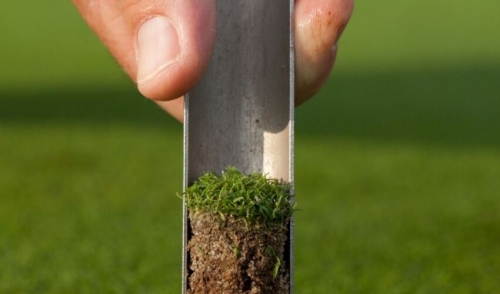{article.name}
Getting Soil Samples and Hay Analysis

- Share this:
- Share on Facebook
- Pin on Pinterest
- Tweet on Twitter
The quality of your soil directly impacts the quality of the hay and other forage you can grow for your horses, cattle, sheep, llamas, and other grazing livestock. Getting soil samples and hay analysis, however, can help you more accurately determine the composition of your hay and how you can adjust your soil quality to improve your pasture and better nourish your animals.
Why Test Both Your Soil and Hay?
There are many factors that go into the quality of the hay you grow, including climate, weather patterns, sunlight levels, fertilizing practices, and initial seed quality. Soil quality, however, has the greatest impact on the nutrient composition and moisture uptake of your hay, however, and thorough testing can help you better understand how the soil and plants work together to create nutritional forage. Each test analyzes different factors, and together they can give a more complete picture of the nutrition you’re able to provide to your grazers.
Soil analysis will reveal information such as…
- Organic and inorganic composition and ratios in the soil
- Degree of soil compaction, which will affect root growth
- pH levels and overall acidity or neutrality of the soil
- Overall particle size that will affect soil drainage and moisture levels
- Nutrients present in the soil, including calcium, phosphorus, potassium, magnesium, and nitrogen, and what proportions of the nutrients are available for plant uptake
When soil analysis is complete, you can better adjust fertilization treatments, lime applications, dethatching practices, and other pasture management to help improve the soil to better support the exact forage that is best for your livestock. This ensures you are not wasting money on unnecessary or inappropriate treatments and are able to improve your soil most efficiently.
Hay analysis, on the other hand, will discover details such as…
- Overall plant composition of mixed hay samples
- Fiber content of the plant material
- Ratio of leaves-to-stems, which influences the general nutrition of the hay
- Protein content of the plant material
- Presence of mold and what type of mold, if it is detected
Once you better understand the hay you are growing, you can determine if a different type of pasture may provide better nutrition for your animals. You can also adjust other feeding practices, such as how much grain the animals receive or whether mineral supplements may be necessary for the best diet to keep your animals in peak condition.
Tips for the Best Soil and Hay Analysis
To make the most of your soil and hay analysis, it is best to always test representative samples of each material. This involves taking multiple samples to create a mixed testing group that best represents your overall field, hay bales, and pasture. First and foremost, follow all instructions and recommendations from the testing lab to collect your samples. For the best test results…
- Choose an analysis lab in your region, such as a local university extension or reputable laboratory. Local experts will have more experience with the exact conditions your region provides and can offer more insightful, personalized analysis.
- Be consistent with the samples you offer for analysis, including the depth of each soil core or the proportion of each hay plant sampled. If sampling hay bales, also be consistent with core size and how each sample is collected.
- Test your soil and hay samples every 3-4 years, and keep records of pasture maintenance and treatments between testing cycles so you can better determine the effectiveness of your practices as the soil and hay composition changes over time.
- Soil and hay can be sampled and tested in any season, but always submit for testing at the same season each year to keep your analysis consistent. Different labs may have different preferences for when samples should be collected and tested.
Soil and hay testing should be part of your overall pasture management techniques. By carefully analyzing your samples, you can offer better nutrition to your grazing livestock, minimize unnecessary pasture treatments, and improve your herd to keep each animal in top form with the best possible diet.
Special Offers
We are constantly adding new specials to our site. Be sure to check back often!



Comments